|
BULB LOG 37 13th September 2006

Pitlochry
We had a great time last weekend across in Pitlochry, thanks Julia, where I had to get my picture taken beside the floral display outside the Town House for this is the SRGC logo in carpet bedding. This is to help publicise the Club in general and also the season of Monthly Exhibitions and Workshops we have been holding at the Explorers Garden.
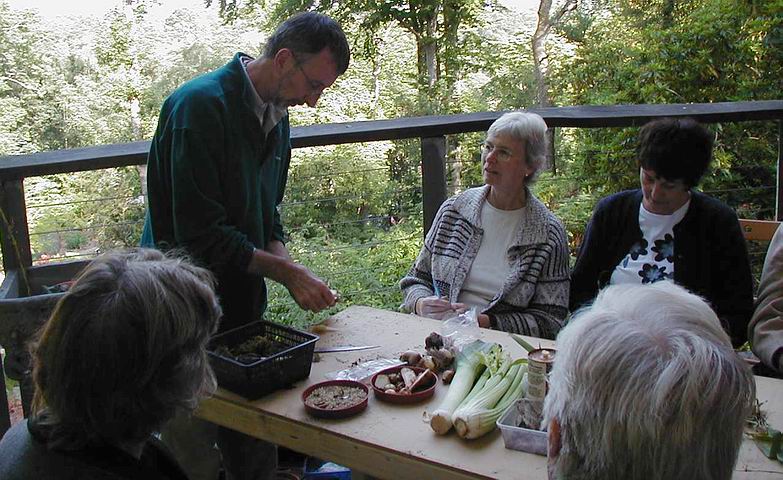
Bulb workshop
We looked at bulbs at last weekend's workshop - what they are and how to grow them in a little over two hours.
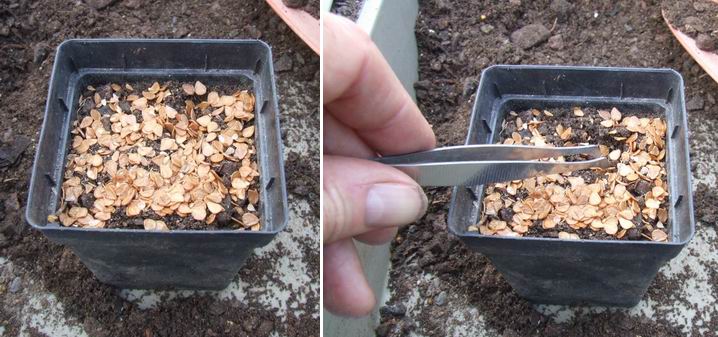
Sowing Fritillaria seeds 1
On returning home the ongoing bulb workshop continues in real life with me sowing the Fritillaria seeds. All our own collected frit seeds from this year plus the frit seeds I received from various sources last January, which have been carefully stored in a cool dry place, are now sown. Unlike many seeds which should be sown thinly so they do not overcrowd each other as they germinate and grow, I am quite happy to sow bulb seeds densely because they will only produce a thin leaf in their first year and they do not mind the competition, in fact as I so often mention, the bulbs grow better when well packed in to a pot. Having scattered the seeds on the surface of the compost I then rake them lightly with a pair of bent forceps or similar wee tool.
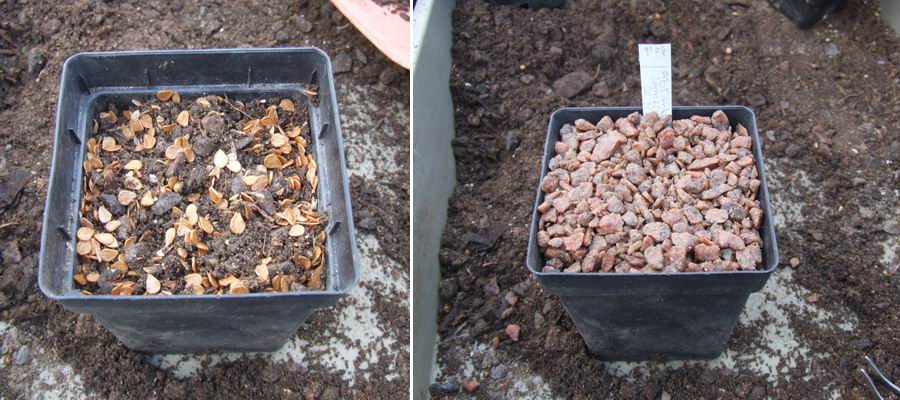
Sowing Fritillaria seeds 2
This spreads them a bit more evenly and turns some of them onto their sides and into the top layer of compost. I then top the pot off with 1 to 2 cms of 6mm gravel before giving it a thorough watering.
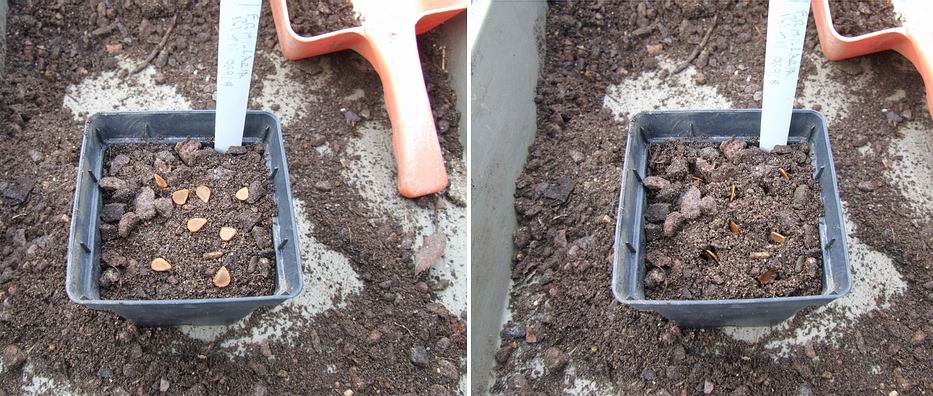
Sowing Fritillaria seeds 3
Often we only get a few seeds per packet from the seed exchanges, especially when they are of some rarity, and I do treat these slightly differently. As there are very few seeds I place them individually spacing them around the pot and then using the forceps push them on their edge just into the compost - a gentle tap of the pot brings the compost into contact with the seeds and then they are also topped off with gravel. Placing then on their side like this reduces the chance of damage or rotting off which can occur and may improve the chances of a good germination by allowing the seeds to be kept more evenly moist. If you observe fritillaria seeds that have shed in the garden; the action of the wind and rain allied with the shape of the seed causes the majority of them to turn on their sides and semi penetrate the ground like this, so I am just imitating nature.
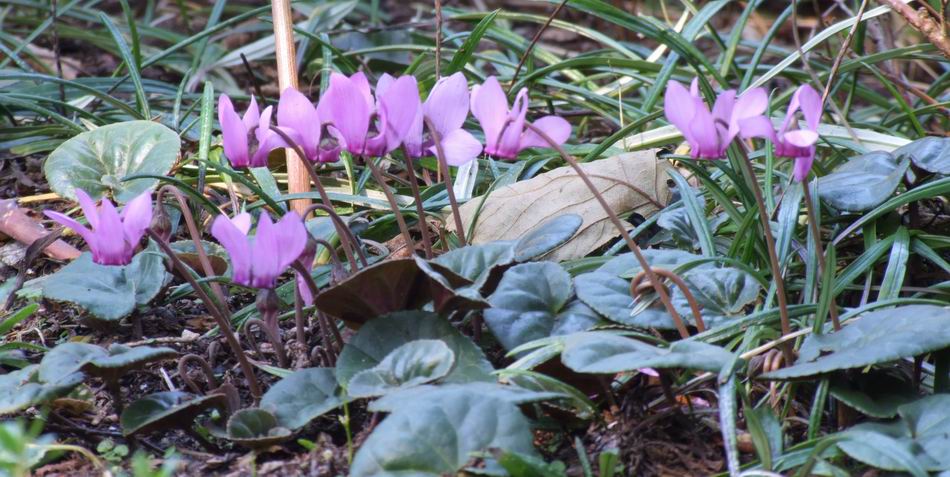
Cyclamen purpurascens
In the garden Cyclamen purpurascens continues to flower and I visit it several times a day to enjoy its wonderfully soothing and relaxing scent - what a therapy, I wish I could bottle it.
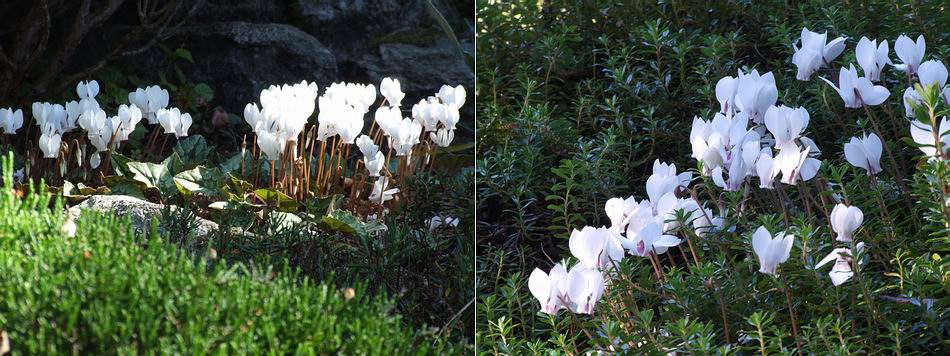
Cyclamen hederifolium album
For some reason Cyclamen hederifolium album seems to grow more strongly in our garden than the normal pink coloured forms.
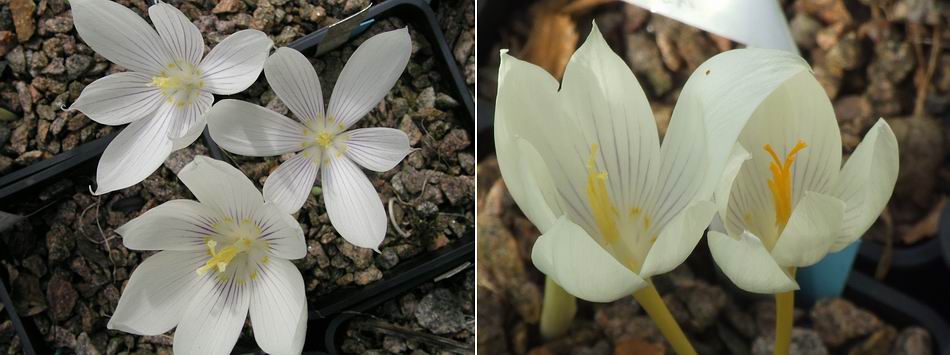
Crocus vallicola
In the bulb frame the flowers of Crocus vallicola show the variation we get from our seed sowing in the markings on the petals and the colour of the stigma and anthers. Our original plants were all from wild seed collected in Turkey and over the years these have been crossed to produce this garden variation. It grows well but never increases much by offsets so seed is the only way of increase.
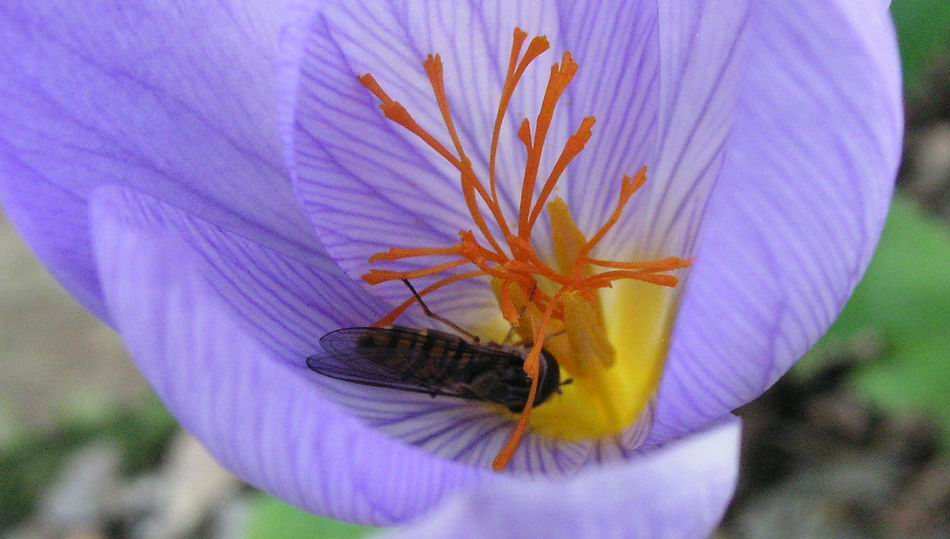
Hover fly on Crocus speciosus
In a raised bed the first flowers of Crocus speciosus are attracting the attentions of a hoverfly seeking the reward of a taste of nectar.
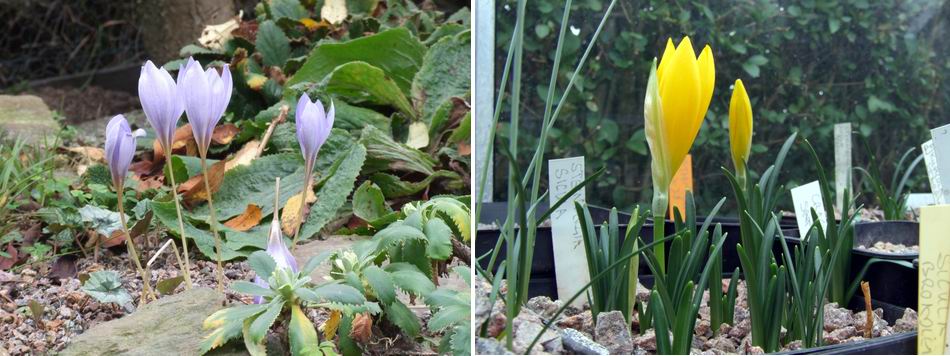
Crocus speciosus and Sternbergia sicula
I was asked, in the bulb log feed back on the Forum, which bulbs I choose to grow under glass and which go in the garden. The answer is that many of the bulbs we grow will survive in a well drained sunny part of the garden and we do try to grow an increasing number of them outside this way, but they are subject to damage by the vagaries of our weather, especially when they are in flower. Autumn flowering crocus like C. speciosus look wonderful in the garden but they never last more than a day or two before their flowers are knocked over by the wind or rain, not to mention being chomped off by a night-time foraging slug or snail. Bulbs like Sternbergia sicula have never flowered in our garden except under glass where they can get that bit of extra heat they need to ripen their flower buds. As a general rule we always keep some in pots to grow under glass and as soon as we have a surplus then we also try them outside and I am always amazed how many do survive in the open even though they do not get the chance t
o flower to their best because of our climate. Another big influential factor for growing the bulbs in a glasshouse, over either the open garden or frames, is that I too get the protection from the Aberdeen weather during the winter months when so many of the bulbs flower.
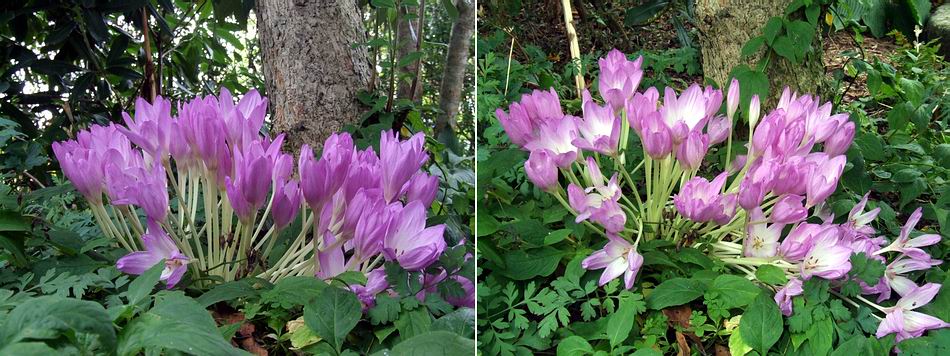
Garden colchicums
Bigger species of Colchicums are all outside and look best planted close to a tree where their big leaves can grow and be enjoyed in the spring.
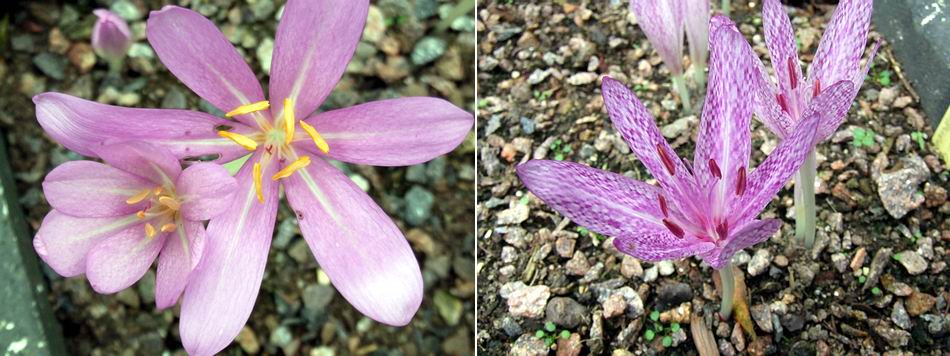
Colchicum laetum and agrippinum
We also have a polystyrene fish box full of most of our Colchicums so we can easily split them up each year harvesting the generous increase they produce annually.
If you want to grow a colchicum but do not want the bigger leaved ones then Colchicum agrippinum, above right, is the one to go for. It produces a succession of well tessellated flowers and the leaves, when they come in the spring, are fairly narrow and short, perfect for a rock garden.
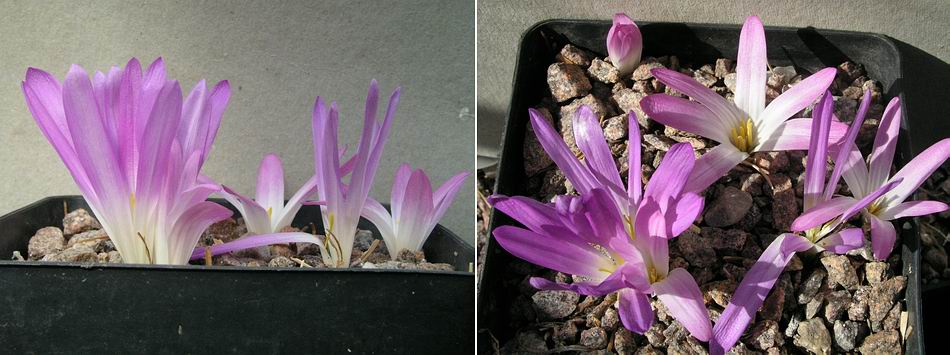
Colchicum montanum
On the other hand the reason to grow many of the smaller colchicums under glass is not only because they need the heat to flower, but also to spare them from the weather and the hungry slugs and snails - when we first got Colchicum montanum it was called Merendera Montana.
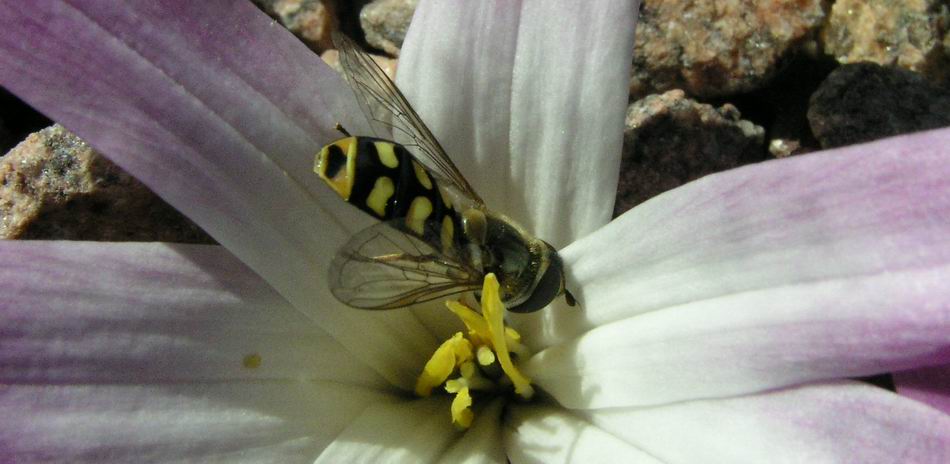
Colchicum and hover fly
The change in name does not bother the hoverflies so why should it bother us?
^ back to the top ^
|

